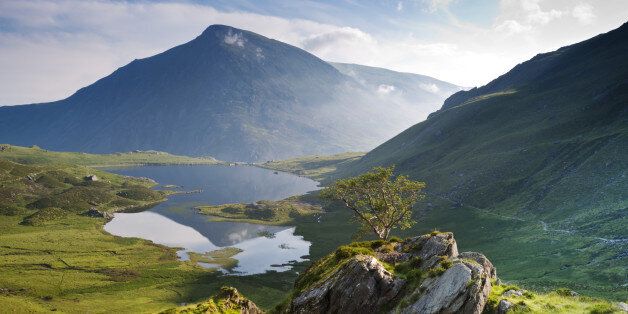
Walking in the mountains of Snowdonia, the problems of the city can feel a long way away. The negative impact of poor air quality on human health is, thankfully, increasingly well-documented. Not only does air pollution contribute to thousands of early deaths, it also compromises the health of people suffering from ailments like asthma.
Sadly, though, the blight of air pollution is much more than just a public health issue. Flying largely beneath the radar is the devastating impact air pollution is having on plants and the habitats and wildlife they underpin. It's a problem in the countryside too.
It is no exaggeration to say that an excess of nitrogen deposited from the air is pushing many wildlife habitats into a critical condition. In a report released today by Plantlife, we reveal that a staggering 90% of sensitive habitats in England and Wales - woodlands, heathlands, wildflower meadows and the like - are suffering from excess nitrogen.
Nitrogen deposition takes place when nitrogen emissions from transport, power stations, farming and industry - mainly emitted as nitrogen oxides and ammonia - are deposited into the natural environment directly from the air or in rain. And the results of nitrogen build-up are hugely damaging to biodiversity. 'Thuggish' plants - such as nettles - that flourish with high levels of nitrogen are literally overpowering many of our rarer and more endangered wild plants, which simply cannot compete in such nutrient-rich conditions.
As the countryside greens up this spring the impacts of nitrogen deposition are clear for all to see; you don't need to venture far to see that nettles, docks and hemlock are running ever more rampant and smaller, more delicate plants like harebells are being shouldered aside. But even high up in the mountains of Snowdonia, rare and threatened jewels such as mossy saxifrage are struggling. The high rainfall here brings high levels of nitrogen deposition and the rock crevices where the saxifrage grows are now becoming choked with grass.
Our report, which is backed by the National Trust, the Woodland Trust, RSPB, the Botanical Society of Britain and Ireland, the British Bryological Society, the British Lichen Society, Flora Locale, SEI, and Chester Zoo, spells out how tackling the destructive impact of atmospheric nitrogen deposition on plants and ecosystems is one of the greatest challenges facing nature conservation.
As it stands, we are force-feeding the natural world an unhealthy diet of nutrient-rich junk food. But, thankfully, there are solutions. Some of these are very simple, such as keeping slurry tanks covered and planting tree buffer strips around sources of ammonia such as chicken farms, especially when these lie close to sites of conservation importance. Tackling long-range deposition at national and international levels is more challenging, but tough targets are in place for governments to reach.
It is now vital that landowners, industry and politicians come together to urgently address this mounting, and largely under-reported, problem. The very fabric of our countryside is changing under this rain of nitrogen and if the damage continues it will harm the ability of our most precious wildflower habitats to cope with other pressures such as climate change. Starting today, we really do need to talk about nitrogen.
